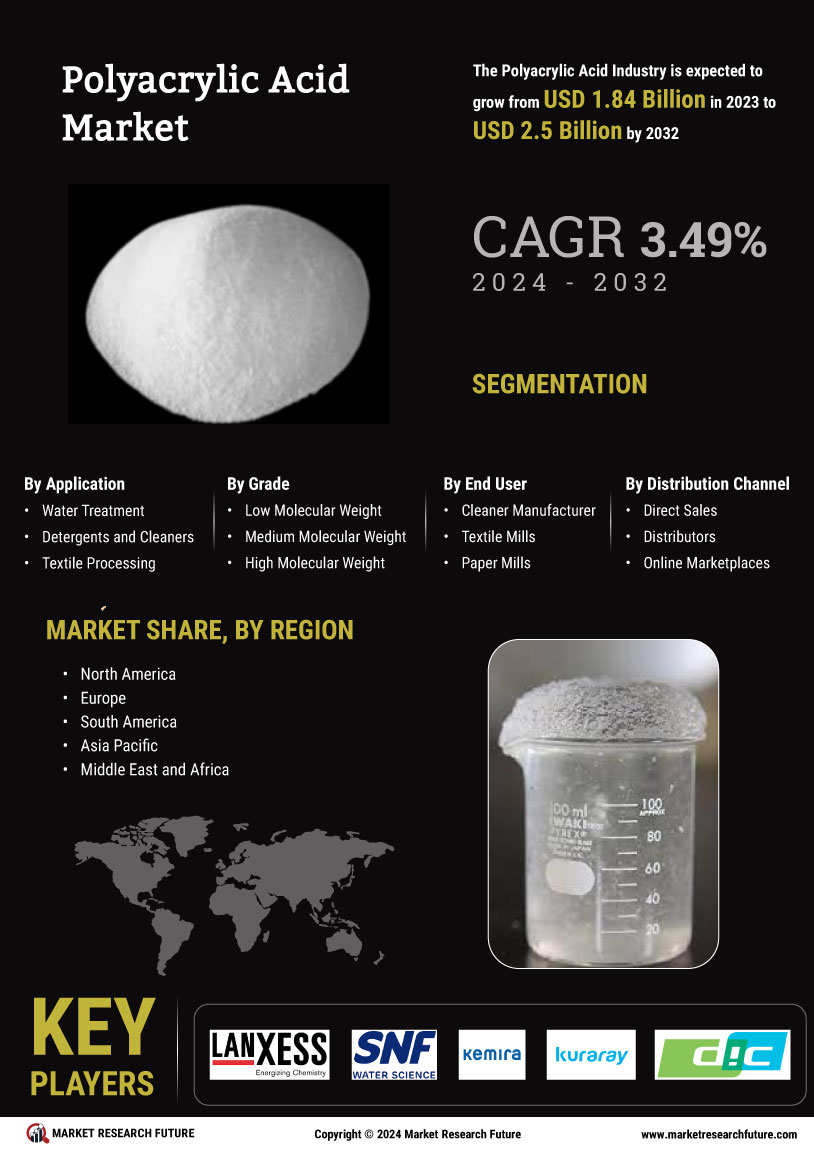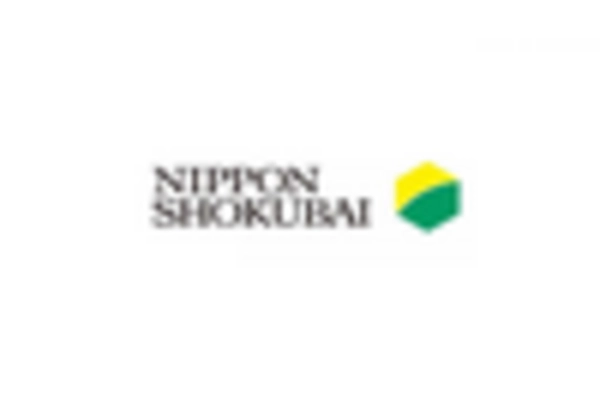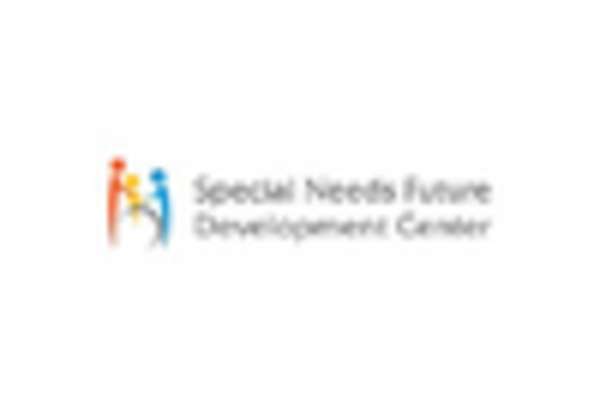Growth in the Healthcare Sector
The Polyacrylic Acid Market is experiencing growth driven by its applications in the healthcare sector. Polyacrylic acid is utilized in various medical products, including drug delivery systems, wound dressings, and hygiene products. The healthcare industry is expanding, with an increasing focus on innovative materials that enhance patient care and treatment outcomes. As the demand for advanced medical solutions rises, the need for high-quality polyacrylic acid is likely to increase. Furthermore, the trend towards personalized medicine and biocompatible materials may further stimulate the Polyacrylic Acid Market. This growth trajectory indicates a promising future for polyacrylic acid applications in healthcare, potentially leading to new product developments and market opportunities.
Expansion in Agricultural Applications
The Polyacrylic Acid Market is witnessing an expansion in agricultural applications, particularly in water retention and soil conditioning. Polyacrylic acid-based superabsorbent polymers are utilized to enhance soil moisture retention, which is crucial for improving crop yields in arid regions. The agricultural sector is increasingly adopting these materials, as they can potentially reduce water usage by up to 50%, thereby addressing water scarcity issues. This trend is likely to bolster the demand for polyacrylic acid, as The Polyacrylic Acid Market is expected to grow significantly, driven by the need for sustainable farming practices. Consequently, the Polyacrylic Acid Market may see a substantial increase in investments and innovations tailored to agricultural needs.
Rising Demand in Personal Care Products
The Polyacrylic Acid Market is experiencing a notable surge in demand due to its extensive use in personal care products. Ingredients derived from polyacrylic acid are increasingly favored for their thickening and emulsifying properties, which enhance the texture and stability of lotions, creams, and gels. The market for personal care products is projected to grow at a compound annual growth rate of approximately 5% over the next few years, indicating a robust opportunity for polyacrylic acid applications. As consumers become more conscious of product formulations, the demand for safe and effective ingredients is likely to drive further growth in the Polyacrylic Acid Market. This trend suggests that manufacturers may need to innovate continuously to meet evolving consumer preferences.
Increasing Use in Construction Materials
The Polyacrylic Acid Market is benefiting from the increasing use of polyacrylic acid in construction materials. Its properties as a binder and thickener make it an essential component in adhesives, sealants, and coatings. The construction sector is projected to grow steadily, driven by urbanization and infrastructure development. As a result, the demand for high-performance construction materials is likely to rise, further propelling the use of polyacrylic acid. Additionally, the trend towards sustainable building practices may encourage the adoption of eco-friendly formulations that incorporate polyacrylic acid. This evolving landscape suggests that the Polyacrylic Acid Market could experience significant growth as it aligns with the needs of the construction sector.
Technological Advancements in Manufacturing
Technological advancements in the manufacturing processes of polyacrylic acid are poised to enhance production efficiency and reduce costs. Innovations such as improved polymerization techniques and the development of more sustainable raw materials are likely to transform the Polyacrylic Acid Market. These advancements may lead to higher purity levels and better performance characteristics of the final products. As manufacturers adopt these technologies, the overall production capacity is expected to increase, potentially leading to a decrease in prices and greater accessibility for various applications. This shift could stimulate demand across multiple sectors, including construction, textiles, and healthcare, thereby reinforcing the growth trajectory of the Polyacrylic Acid Market.


















Leave a Comment